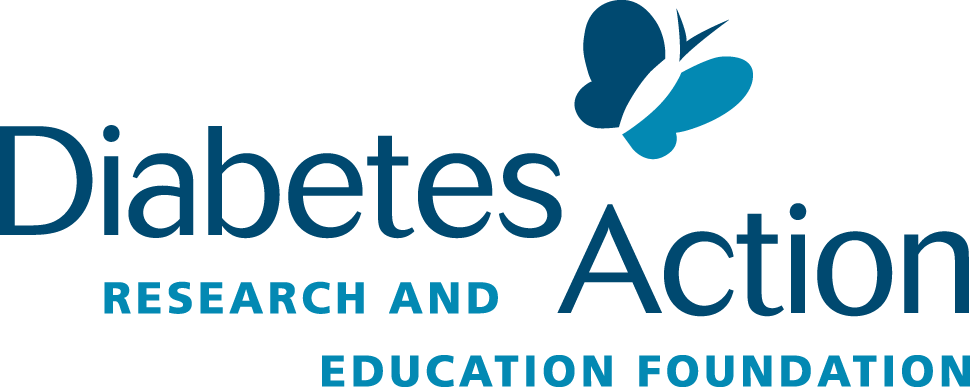
past Research
2020
Home > Research > Past Research > 2020
Cure for Type 1 Diabetes
A PROGRAM FOR THE CURE OF TYPE 1 DIABETES USING A GENERIC DRUG: PHASE II
Researcher:
Denise L. Faustman, MD, PhD., Associate Professor
Harvard Medical School and Director Immunobiology Laboratory
Massachusetts General Hospital
Charlestown, MA
Purpose:
In August 2012, results of the Phase I trial showed that the pancreas of long-term diabetics was able to transiently make insulin after two doses of the Bacillus Camlette-Guerin (BCG) vaccine. In 2018 a follow up report on a total of 232 participants both treated and untreated with BCG, published in the journal Vaccines, showed positive results in lowering blood sugars in subjects with type 1 diabetes to almost normal levels while also reducing the amount of insulin needed about one-third after 5 to 8 years from the initial treatment with the BCG vaccine without any reports of severe hypoglycemia. The 2015 FDA approved Phase II clinical trial, which is now fully enrolled with 150 participants with long-term type 1 diabetes, will determine the dose and frequency of doses required to reverse type 1 diabetes. It is still necessary to obtain funding to track these patients for an additional three years with the ultimate goal of bringing BCG to market as an approved treatment for type 1 diabetes. Five additional clinic trials with BCG/placebo to over 150 subjects are currently ongoing.
IDENTIFICATION OF ENVIRONMENTAL CHEMICALS THAT TRIGGER BETA CELL DAMAGE AND TYPE 1 DIABETES
Researcher:
Mihaela Stefan-Lifshitz, PhD
Associate Professor
Albert Einstein College of Medicine
Bronx, NY
Purpose:
The rise in the incidence of type 1 diabetes (T1D), especially in industrialized countries, can only be explained by a prevailing influence of environmental factors interacting with common genetic variants that predispose to T1D. Preliminary epidemiological data support an association between chemical exposure and T1D and there is evidence that such exposures can impact Beta-cell function and contribute to the development of autoimmunity. Despite these correlations, there are no studies directed towards understanding the role of industrial chemical exposure in T1D development. This leaves a gap in our understanding of the T1D etiology and its increasing incidence. Dr. Stefan-Lifshitz has developed a strategy which integrates complementary approaches to efficiently evaluate the association of environmental chemicals and chemical mixtures with T1D development and to dissect the mechanisms by which they trigger T1D in susceptible individuals. These studies will set the rationale for development of prevention strategies based on the mechanisms causing the disease.
DEVELOPMENT OF A MACROCELL (ISLET) ENCAPSULATION DEVICE TO CURE DIABETES
Researcher:
Douglas Sobel, MD
Professor of Pediatrics, Chief Pediatric Endocrinology
Georgetown University
Washington, DC
Purpose:
Islet transplantation is a promising approach to cure type 1 diabetes and some people with type 2 diabetes, but current treatment requires high dose toxic systemic immunotherapy to prevent rejection. Over the last year, Dr. Sobel’s lab has made much progress to overcome major obstacles that have prevented this therapy. They have synthesized a new PLGA-Microsphere system able to release three important drugs to prevent islet rejection over a very long period of time, characterized the physical properties of the microsphere system, and by doing this, have made headway to determine the optimal drug doses within the PLGA. To achieve their goal to safely inhibit rejection of islet transplantation, they will explore an important potential local immunotherapy drug entanercept, fully determine the optimal doses for the drug enladed PLGA, and assess the proper doses to prevent toxicity to the transplanted insulin producing cells in diabetic mice in order to cure them of their diabetes without rejection of the new insulin producing cells. They hope that future studies will lead to curing people with diabetes.
diabetes prevention
LONG-TERM TRAJECTORY OF EARLY VERSUS LATE ONSET TYPE 2 DIABETES: THE CORONARY ARTERY RISK DEVELOPMENT IN YOUNG ADULTS (CARDIA)
Researcher:
EunSeok Cha, Ph.D., MPH, MSN, CDE, RN
Assistant Professor
Emory University Nell Hodson Woodruff School of Nursing
Atlanta, GA
Purpose:
Individuals with early-onset type 2 diabetes (before age 40) have much greater risks of developing chronic diabetes complications compared to those with late-onset diabetes (after age 40), even if they have had diabetes the same length of time. However, current screening, prevention, and treatment guidelines for early-onset are normed for those of late onset. Using data from a landmark observational study, the Coronary Artery Risk Development in Young Adults, this study aims to identify possible differences in the predictors of developing pre-diabetes and type 2 diabetes between early and late onset type 2 diabetes groups. Contributing factors to generate different progression mechanisms in early and late-onset diabetes will be examined. Findings will provide information to increase the precision of diabetes prevention, identification, and care for individuals at risk for and with early onset type 2 diabetes.
IDENTIFICATION OF BIOACTIVE COMPOUNDS FOR THE PREVENTION AND TREATMENT OF T2D
Researcher:
Dongmin Liu, PhD
Professor
Virginia Polytechnic Institute & State University
Blacksburg, VA
Purpose:
Type 2 diabetes is a fastest-growing health problem in the US. It is a result of insulin resistance and loss of insulin secreting beta-cells. The goal of this research is to identify low-cost, natural compounds to prevent and treat T2D. Dr. Liu discovered for the first time that hispidulin, a compound isolated from the herb Salvia plebaia, which is also abundant in oregano, acts in the gut to promote beta-cell function and ameliorates T2D, while sulforaphane, a small molecule derived from cruciferous vegetables, is a potent insulin sensitizer in the body of T2D mice. In this project Dr. Liu will investigate whether a combination treatment with hispidulin and sulforaphane is more effective in preventing T2D development by simultaneously improving insulin sensitivity and preserving functional beta-cell mass in T2D mice. The results from this grant could lead to developing strategy for using these natural products as an alternative or complementary therapy for T2D.
COMPLEMENTARY / NUTRITION RESEARCH
DETERMINE THE ROLE OF VITAMIN A IN THE DEVELOPMENT OF TYPE 2 DIABETES IN ZUCKER DIABETIC FATTY RATS
Researcher:
Guoxun Chen, Ph.D.
Associate Professor, Dept. of Nutrition
The University of Tennessee, Knoxville
Knoxville, TN
Purpose:
The rise of obese population in the U.S. indicates more people with type 2 diabetes in the future, which can be attributed to genetic and nutritional factors. For humans without genetic long-term over-nutrition, excessive intakes of macronutrients (carbohydrates, fat and proteins) for energy, and micronutrients (vitamins and minerals) for metabolic regulation, play a key role in the process. Whether micronutrients such as Vitamin A (VA) play a role in type 2 diabetes development is still an open question. The principal investigator of this proposal has investigated the roles of VA in the regulation of sugar and fat metabolism since 2006. The results show that VA status regulates obesity development and fuel metabolism in Zucker fatty rats. This study will determine whether dietary VA status contributes to type 2 diabetes development in Zucker diabetic fatty rats, a model of type 2 diabetes due to over-nutrition.
EFFECTS OF FATTY ACIDS ON THE BRAIN’S REGULATION OF GLUCOSE METABOLISM
Researcher:
Meredith Hawkins, MD
Professor, Dept. of Medicine (Endocrinology)
Albert Einstein College of Medicine
Bronx, NY
Purpose:
Patients with type 2 diabetes have inappropriately high blood sugar levels, which is predominately produced by the liver. There is evidence in humans and rats that the brain normally regulates sugar production by the liver. However, this regulation is lost in people with type 2 diabetes. Dr. Hawkins’ lab hypothesizes that lowering circulating levels of a type of fat found in the body (free fatty acids) could restore this regulation and improve the brain’s ability to control sugar levels. Patients with type 2 diabetes will be studied before and after normalizing their free fatty acids levels with vitamin B3, to determine whether the brain’s impaired ability to regulate blood sugar can be reversed. Together, these studies will determine whether it is possible to restore the brain’s regulation of blood sugar in type 2 diabetes. These studies are likely to provide novel therapeutic target for controlling blood sugar levels in type 2 diabetes.
PROTECTIVE ROLE OF DIETARY OMEGA-3 FATTY ACIDS ON RESOLUTION OF INFLAMMATION IN THE DIABETIC BRAIN
Researcher:
Kevin W. Huggins, Ph.D.
Associate Professor
Auburn University
Auburn, AL
Purpose:
Type 2 diabetes is associated with neurodegeneration leading to cognitive deficits. The mechanism(s) underlying this diabetes-associated cognitive decline is poorly understood but may be related to an increase in diabetes-induced inflammation in the brain. Increased consumption of omega-3 polyunsaturated fatty acids (PUFA) from cold water fish and fish oils have been associated with a decreased risk of diabetes and cognitive decline associated with diabetes. This effect may be related to the anti-inflammatory properties of omega-3 PUFA. Specifically, increased brain omega-3 PUFA increases the production of pro-resolving lipid mediators which decrease inflammation. The goal of this study is to determine the role of omega-3 derived pro-resolving lipid mediators on inflammation in the brain of diabetic mice.
COMPLEMENTARY MANUKA HONEY EMBEDDED DERMAL REGENERATION TEMPLATES TO IMPROVE DIABETIC WOUND HEALING
Researcher:
Laurie P. Shornick, PhD
Associate Professor of Biology
Saint Louis University
St. Louis, MO
Purpose:
Diabetic patients often develop non-healing foot ulcers that result in lower limb amputations. Unfortunately, the 5 year survival rate after lower limb amputation is less than 50%, so there is a critical need to develop wound dressings that will improve healing. Honey has been used for centuries as a complementary treatment for wound healing; however, it is sticky and difficult to apply. When honey warms to body temperature, it may also leak out of the wound. Dr. Shornick proposes an innovative three-dimensional wound dressing containing New Zealand manuka honey which has special properties. The dressing will provide a structure for cells to migrate into the wound, and the honey will provide anti-bacterial protection and will promote the formation of new tissue and blood vessels. Because pigs have skin very similar to human skin, a diabetic pig model will be used to test the efficacy of the honey-embedded wound dressings.
NOVEL FUNCTIONS OF ROSMARINIC ACID AND ITS ANALOG AS DIABETES-PREVENTION NUTRACEUTICALS; IN VIVO EFFICACY STUDIES
Researcher:
Bin Xu, Ph.D.
Assistant Professor
Principal Investigator
Biomanufacturing Research Institute and Technology Enterprise (BRITE)
North Carolina Central University
Durham, NC
Purpose:
The goal of this project is to investigate the novel functions of botanical compound rosmarinic acid (RA) and its analog RA-amide, in the prevention and treatment of diabetes and its complications. Due to a rapidly aging population and the modern sedentary lifestyle, type 2 diabetes (T2D) and related neurodegeneration are reaching epidemic proportions. Currently, there is no known cure for these diseases. One potential molecule link between these diseases is a molecule called amylin. Excessive secretion of this molecule in T2D patients can lead to the formation of toxic aggregates, which can deposit in the pancreas and the brain and cause damages in these tissues. Dr. Xu discovered that both RA and its analog RA-amide potently inhibit amylin aggregation and reduces aggregation-induced toxicity in vitro. This study will determine how effective RA and RA-amide are in ameliorating diabetes and related neurodegeneration in a diabetic animal model.
TREATING AND PREVENTING COMPLICATIONS
TESTING NOVEL IMMUNOTHERAPY TO TREAT DIABETES-INDUCED KIDNEY FAILURE
Researcher:
Kai Y. Xu, Ph.D.
Associate Professor of Surgery
University of Maryland School of Medicine
Baltimore, MD
Purpose:
Diabetes causes kidney failure in which the kidneys are no longer able to remove waste from the body. (Na+ + K+)-ATPase (NKA) is a key enzyme found in large amounts in kidney. Studies have shown that dysfunction of NKA is associated with diabetic kidney failure, indicating that NKA activity is essential to kidney function. Dr. Xu has discovered NKA activator and developed a NKA activator-based immunotherapy. Recent studies reveal that newly developed immunotherapy protects kidney function against progression of type-1 diabetes-induced kidney failure in female NOD mice. Dr. Xu hypothesizes that this immunotherapy may be a universal disease-modifying intervention for both type-1 and type-2 diabetes-induced kidney failure. The proposed investigation will test the hypothesis and examine the efficacy of immunotherapy on both type-1 and type-2 diabetes induced kidney failure. This study challenges the critical barrier of existing treatment by testing a novel immunotherapy to advance our knowledge and improve human health.
ISLET CELL RESEARCH
CIRCADIAN REGULATION OF PANCREATIC ISLET-GUT AXIS IN DIABETES DEVELOPMENT
Researcher:
Li Wen, MD, PhD
Associate Professor in Medicine
Yale University School of Medicine
New Haven, CT
Purpose:
Dr. Wen’s lab recently discovered that pancreatic islets from the non-obese diabetic (NOD) mouse, an animal model for human type 1 diabetes, express a high level of biological clock genes. The expression of these genes changes at different times of the day. These same genes are in the gut of NOD mouse but they are expressed at very different times of the day compared with the pancreatic islets. Both the gut and pancreas are in the digestive system and they are vulnerable to be attacked by immune cells, which alter gut stability or damage the insulin-producing cells. In this study, Dr. Wen will investigate how the clock genes regulate the functions of pancreatic islets and gut differently, with the ultimate goal to provide new knowledge to improve the effectiveness of existing therapy and to design more effective new therapy to treat or prevent type 1 diabetes.












